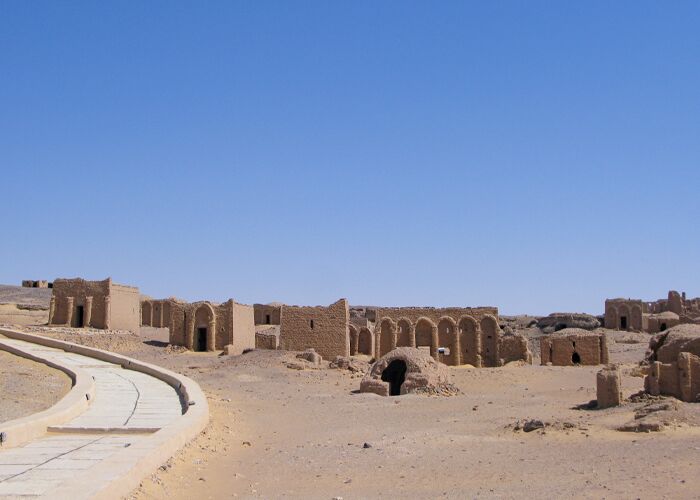Tourists flock to Egypt’s Kharga Oasis.
Kharga is the largest of the Oases and the capital of the New Valley Governorate, which is located there. It has the most people per square mile of all of the Oases.
It’s also the most convenient for seeing the Nile Valley, since it’s just a two-hour drive from Luxor. Many contemporary buildings and a large population may be found in the city’s heart (about 70,000 people).
You’re met by rows and rows of date palm palms as you arrive, and the tang of dates fills your nose.
Even though Kharga is a modern city with a thriving business district, it nonetheless manages to hold on to some of the desert’s romantic charms.
Aside from its ceramics, Kharga is renowned for its craftsmanship.
A pottery factory in the city of Qasr is open to visitors who want to learn more about the process of manufacturing pottery.
To save money, shop in Kharga’s busy bazaar or souk, located in the vibrant Midan Show in the southern part of Qasr town.
Throughout the Roman period, Kharga was a prominent center of activity.
There are a number of relics from both recent and distant times. All of East Africa’s trade passed over the Forty Days Road from Sudan, which passed through Kharga, since the introduction of the camel in 500 BC.
This route is still used by big groups of camels on their way to Cairo, where the bulk of them will be slaughtered upon arrival.
Bagawat’s Chapel’s Sacred Ceilings
This shot shows the domes of one of the world’s best-preserved Christian cemeteries. The grounds are home to 263 beautiful graves and a slew of churches.
The artwork on the roof are very intriguing.
Ask to see the depiction of the zodiac surrounded by portraits of Mary and Jesus.
Pre-Christian Ptolemaic Egyptian art at the Temple of Dendera has an almost exact copy of this design, but sadly, the original was removed from the Louver in 1820 and is no longer on show there.
A line may be drawn which connects the two extremely distinct religions.
One of the characters developed by Ain Um Dabadib is called Ain Um Dabadib.
Around 40 kilometers north of the large town of Qasr Kharga is the amazing fortress known as Ain Um Dabadib, which dates back to pre-Roman times.
There are breathtaking views from this vantage point, which is situated below the escarpment yet 220 meters above the desert floor.
This area is littered with broken and scattered ceramic pots, some of which date back to the Islamic, Christian, and even pre-Christian centuries.
It’s hard to choose between Egypt and Paris when it comes to magnificent cities.
The city of Baris in Kharga is often believed to have been named after Paris.
It’s possible that Egyptians had a great sense of humor, as seen by this.
Old Baris was replaced with New Baris, an environmentally sound hamlet created by world-renowned architect Hassan Fathi.
As a result, New Baris is now an abandoned specimen of beautiful architecture that nonetheless falls short of its potential.

